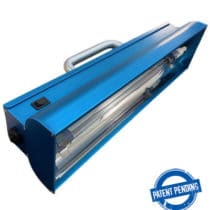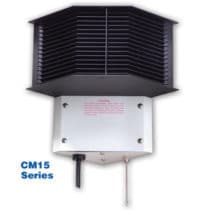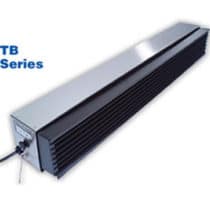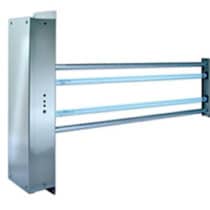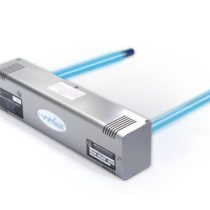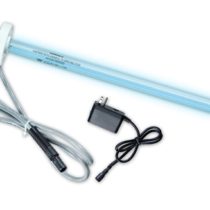SMI is proud to be the exclusive distributor for American Ultraviolet in Alaska.
Contact us at 907-569-6909 to discuss the best options to protect and safeguard your home and business with one of the products below.
The International Ultraviolet Association (IUVA) believes that UV disinfection technologies can play a role in a multiple barrier approach to reducing the transmission of the virus causing COVID-19, SARS-CoV-2, based on current disinfection data and empirical evidence. UV is a known disinfectant for air, water and surfaces that can help to mitigate the risk of acquiring an infection in contact with the COVID-19 virus when applied correctly. “The IUVA has assembled leading experts from around the world to develop guidance on the effective use of UV technology, as a disinfection measure, to help reduce the transmission of COVID-19 virus. Established in 1999, the IUVA is a nonprofit dedicated to the advancement of ultraviolet technologies to help address public health and environmental concerns,” says Dr. Ron Hofmann, Professor at the University of Toronto, and President of the IUVA.
It must be noted that “UVC”, “UV disinfection” and “UV” as used here and in the scientific, medical and technical literature, specifically and importantly refers to UVC light energy (200-280nm light) in the germicidal range which is not the same as the UVA and UVB used in tanning beds or sunlight exposure.
Facts on UV and COVID-19
Can UVC help prevent COVID-19 transmission by reducing contamination?
Based on existing evidence, we believe so. Here’s why:
UVC light has been used extensively for more than 40 years in disinfecting drinking water, waste water, air, pharmaceutical products, and surfaces against a whole suite of human pathogens (Fluence UV Dose Required review IUVA). All bacteria and viruses tested to date (many hundreds over the years, including other coronaviruses) respond to UV disinfection. Some organisms are more susceptible to UVC disinfection than others, but all tested so far do respond at the appropriate doses.
- UVC disinfection is often used with other technologies in a multi-barrier approach to ensure that whatever pathogen is not “killed” by one method (say filtering or cleaning) is inactivated by another (UVC). In this way UVC could be installed now in clinical or other settings to augment existing processes or to shore up existing protocols where these are exhausted by excessive demands due to the pandemic.
- UV light, specifically between 200-280nm (UVC or the germicidal range), inactivates (aka, ‘kills’) at least two other coronaviruses that are near-relatives of the COVID-19 virus: 1) SARS-CoV-1 and 2) MERS-CoV. An important caveat is this inactivation has been demonstrated under controlled conditions in the laboratory. The effectiveness of UV light in practice depends on factors such the exposure time and the ability of the UV light to reach the viruses in water, air, and in the folds and crevices of materials and surfaces.
- COVID-19 infections can be caused by contact with contaminated surfaces and then touching facial areas (less common than person-to-person, but still an issue). Minimizing this risk is key because COVID-19 virus can live on plastic and steel surfaces for up to 3 days. Normal cleaning and disinfection may leave behind some residual contamination, which UVC can treat suggesting that a multiple disinfectant approach is prudent. UVC has been shown to achieve a high level of inactivation of a near-relative of COVID-19’s virus (i.e., SARS-CoV-1, tested with adequate dose of 254nm UV while suspended in liquid). IUVA believes similar results can be expected when treating COVID-19’s virus, SARS-CoV-2. However, the key is applying UVC in such a way that it can effectively reach any remaining viruses on those surfaces.
- IUVA also concurs with CDC guidance to hospitals that the germicidal effectiveness of UVC is influenced by the UVC absorbing properties of the suspension, the surface or aerosol that the organism is in; by the type or action spectra of the microorganism; and by a variety of design and operating factors that impact the delivered UV dose to the microorganism (https://www.cdc.gov/infectioncontrol/guidelines/disinfection/ ).
- IUVA recognizes that in the cases where the UVC light cannot reach a particular pathogen, that pathogen will not be disinfected. However in general, reducing the total number of pathogens reduces the risk of transmission. The total pathogenic load can be reduced substantially by applying UV to the many surfaces that are readily exposed, as a secondary barrier to cleaning, especially in hurried conditions. This would be a relatively straight-forward matter of illuminating the relevant surfaces with UVC light, for example the air and surfaces around/in rooms and personal protective equipment.
Are UVC disinfection devices safe?
Like any disinfection system, UVC devices must be used properly to be safe. They all produce varying amounts of UVC light in wavelengths of 200nm-280nm. This UVC light is much “stronger” than normal sunlight, and can cause a severe sunburn-like reaction to your skin, and similarly, could damage the retina of your eye, if exposed. Some devices also produce ozone as part of their cycle, others produce light and heat like an arc welder, others move during their cycles. Hence, general machine-human safety needs to be considered with all disinfection devices, and these considerations should be addressed in the operations manual, in the user training, and appropriate safety compliance.
Are there performance standards and UVC validation protocols for UV disinfection devices?
Given the wide array of UVC devices marketed for disinfection of air, water and solid surfaces, the lack of uniform performance standards and the highly variable degree of research, development and validation testing that is performed on different devices, the IUVA urges consumers to exercise caution when selecting equipment and look for evidence of third party testing as well as certification of device materials and electrical components by well-known organizations such as NSF, UL, CSA, DVGW-OVGW or other international requirements as applicable.
For UVC devices designed to inactivate air and solid surfaces in the healthcare industry, members of IUVA are working diligently with other national standards organizations in the lighting and healthcare industry to develop disinfection testing standards. The goal is to develop guidance that will help healthcare providers world-wide choose the best possible technologies for their institutions to use in the fight against multiple drug resistant organisms and other pathogens, like the COVID-19 virus.
IUVA will soon post a website dedicated to UV and COVID-19, please email us at info@iuva.org, if you would like for us to send you alerts on website postings and other IUVA activities.

